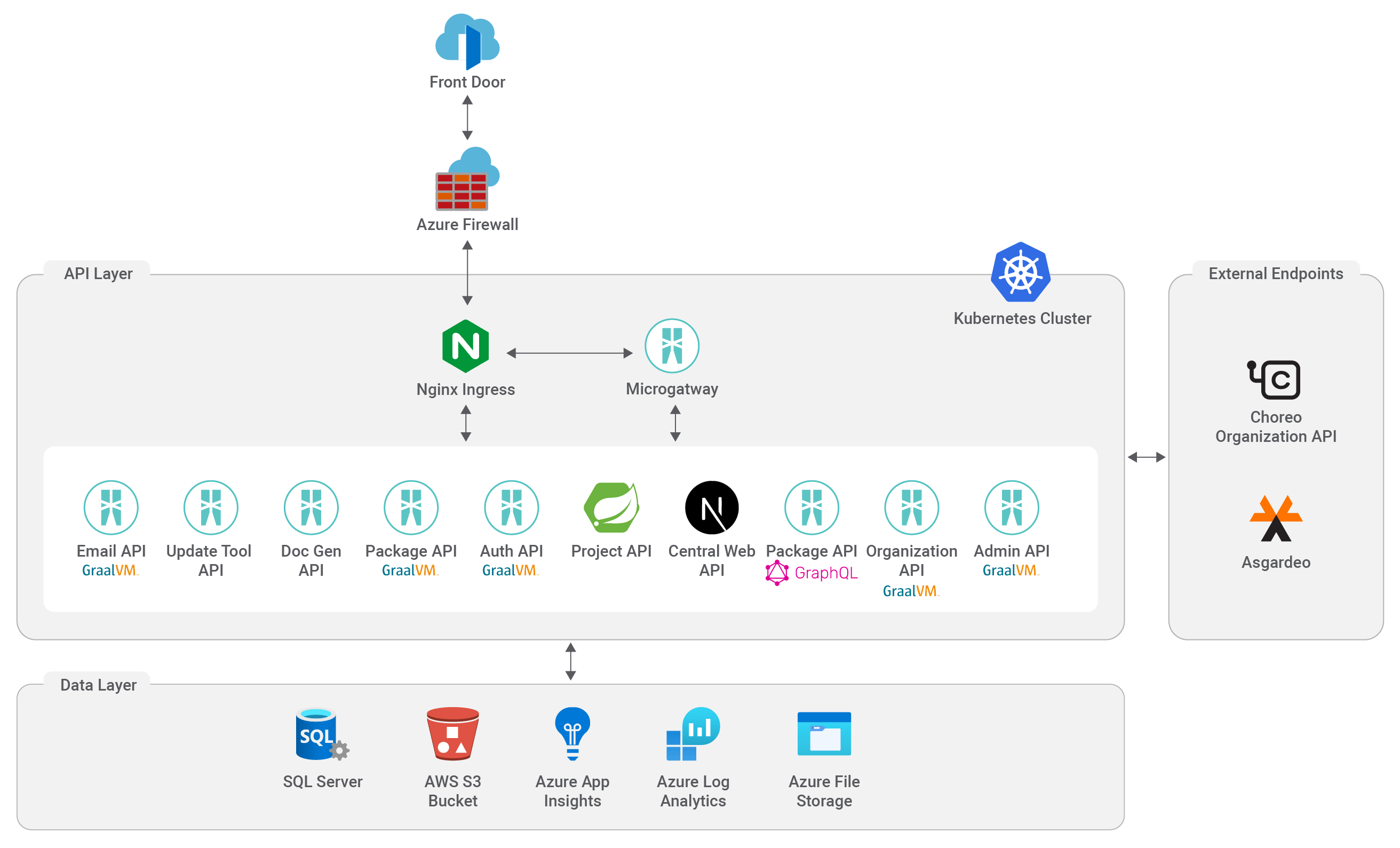Ballerina code is organized in a single, shareable unit called a package. Ballerina packages are developed via different channels in multiple categories. These categories include the Ballerina packages that are developed by the Ballerina team, which are shipped with the Ballerina distribution, the BallerinaX packages that are developed by the Ballerina team but are not shipped with the distribution, and the packages that are developed by third-party users, which are also not shipped with the distribution.

Overview
With the rapidly increasing growth of a wide range of these Ballerina packages, a need for a globally hosted robust package management system to discover, download, and publish them was highlighted. Ballerina Central was developed to cater to this purpose as the all-inclusive package repository to manage Ballerina, BallerinaX, and other packages belonging to other organizations.
Challenges
The primary objective of Ballerina Central is to manage the wide spectrum of Ballerina packages most effectively and optimally. Therefore, it was critical for Ballerina Central to be a cloud deployment, which can scale the platform on demand when the load is increased by preserving consistent high availability for its users. Designing the solution faced several other secondary challenges such as the requirement to handle JSON, other network-services-related data types, and database connectors, achieve concurrency via isolated services, and generate Docker and Kubernetes images for a robust and resilient cloud deployment.
Solution
The Ballerina language was the natural choice when implementing Ballerina Central, not only to demonstrate its features in a real-world use case but also because the features of Ballerina were deemed to be the perfect choice to meet the specific requirements and develop the best package repository, prompting to come up with a fresh an innovative solution for itself.
As for the main highlights of the solution as illustrated in the diagram below, WSO2 Choreo was used to provide the hosting capabilities, WSO2 Asgardeo was used as the identity service provider, and Microsoft Azure products and SQL were used in implementing the cloud-based network and data storage requirements.

Benefits
Implementing the Ballerina Central platform had a profound impact on managing Ballerina packages in an optimized manner based on the key areas listed below.
-
Scalability: The platform easily accommodated increased uploads of Ballerina packages, ensuring a seamless experience for developers when downloading them.
-
High availability: The use of the cloud-native features of the Ballerina language together with the Azure cloud deployment helped to ensure high availability in the solution.
-
Load handling: The implementation was designed to be capable of handling a large number of user requests being made simultaneously to download Ballerina packages.
-
Package maintenance: The solution enabled storing and managing the packages all in one place together with the components related to them such as the corresponding source code and documentation.
-
Security: Ballerina's strong security features such as OAuth2 authentication and rate limiting were used in implementing security in Ballerina Central to secure and safeguard sensitive information associated with the packages.
-
Monitoring and analytics: With the Azure log analyzer, Ballerina's observability capabilities were utilized to gain real-time insights into the performance of the packages.
-
Enhanced CI/CD capabilities: The solution was designed with improved CI/CD features to ensure smooth and effective usage of the packages via operations such as publishing and downloading.
-
Augmented development experience: The concise and efficient syntax of the Ballerina language combined with its advanced graphical tooling facilitated an enhanced development experience, which included writing the code with less effort, reducing the learning curve, and improving long-term code readability and maintainability.
Conclusion
The journey of Ballerina Central to implement a robust and resilient Ballerina package management platform was successful mainly due to the perfect matching of the Ballerina features with the requirements of the planned solution. The platform not only paved the way for them to meet the expectations of managing the Ballerina packages smoothly and effectively but also demonstrated a practical example of utilizing the feature-rich Ballerina language in a real-world scenario, thereby, safeguarding and strengthening the simplicity and powerfulness of the Ballerina language ecosystem for continued growth in the enterprise integration solutions arena.
Ballerina Central's successful implementation of a robust package management platform showcases the perfect synergy between Ballerina's features and the solution's needs. This achievement not only ensures efficient Ballerina package management but also serves as a compelling real-world testament to the language's adaptability by strengthening the simplicity and power of the Ballerina language ecosystem.
Anuruddha Liyanarachchi - Technical Lead, WSO2 LLC.
The logos and marks used in this page : Azure Front Door (Microsoft), Azure Firewall (Microsoft), Kubernetes (The Linux Foundation), NGINX Ingress (F5, Inc), GraalVM (Oracle and/or its affiliates), Spring Boot (Broadcom), Next.js (Vercel, Inc.), GraphQL (The GraphQL Foundation), SQL Server (Microsoft), Amazon S3 (Amazon Web Services, Inc.), Azure Application Insights (Microsoft), Azure Log Analytics (Microsoft), and Azure Files (Microsoft), belong to the respective trademark owners and WSO2 excludes any and all copyrights, trademarks, rights and interests in those logos and marks.